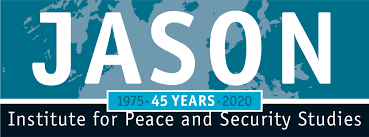Part 3 of 3 Parts (Please read Part 2 first)
Mark Herrmann is the LLNL’s deputy director for fundamental weapons physics. He said that the LLNL gets a lot of feedback from more than one hundred scientists involved in the NIF program. However, he emphasized that the long-term goal is to achieve yields that are at least two orders of magnitude above those that were managed last August. He added, “As long as we’re doing good, careful, systematic scientific study, that’s what’s most important from my perspective.”
Riccardo Betti is the head of the laser-fusion center at the University of Rochester in New York. He provides independent assessments of the experiments at the NIF. He said that the failure of the NIF to replicate last August’s breakthrough experiment was to be expected because the lasers are now operating at the “ignition cliff”. He added that “If you are on one side of the cliff, you can get a lot of fusion output, and if you are on the other side of the cliff, you get very little.” He also said that the LLNL does not yet have the experimental accuracy to predict on which side a given experiment will land.
Questions about fundamental science and the ability to accurately make predictions were at the center of a classified review of the NIF’s contributions to the U.S. nuclear weapons program were provided to the NNSA last year by JASON. JASON is an independent scientific panel that advises the U.S. government. In an unclassified executive summary of the report that was obtained under the U.S. Freedom of Information Act, the panel acknowledged the abilities of the NIF. However, they stated that the facility is unlikely to achieve “predictable, reproducible ignition” in the next several years.
The report was completed and released to NNSA four months before the August shot. Hurricane and others have argued that the report was ill-timed and too pessimistic.
The JASON panelists advocated a fundamental rethinking of the program in their report. That discussion has already begun in the broader laser-fusion community. Scientists at the NIF and elsewhere are examining ways to reconfigure the current lasers. Others are pushing for entirely new designs that could provide more practical avenues towards fusion energy.
As far as Hurricane is concerned, he is in no hurry. He claims that the device is now operating in a crucial fusion regime that will be useful for understanding the reliability of nuclear weapons.
Hurricane said, “Once we get more energy and more predictability, you have kind of skipped over the interesting physics. If understanding and being better scientists and stewards [of the nuclear stockpile] is your objective, this is the regime to work in.”
There are many different approaches to nuclear fusion. Various private companies and governments are spending billions of dollars on experiments with a variety of designs for prototypes of commercial fusion reactors. Inertial confinement research at the NIF is a long shot. Magnetic confinement found in tokamaks and stellarators is more likely to be the basis of future commercial fusion reactors.
